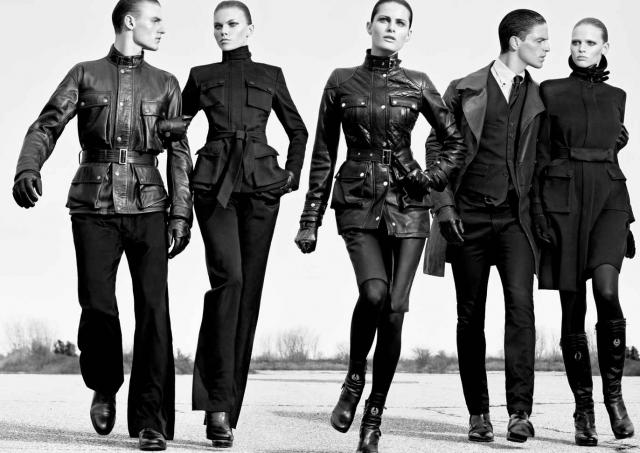 |
| belstaff.com |
Paris,France — A new
business trend phenomenon in the fashion industry: major luxury groups appear
to prefer reviving fashion houses that has placed its roots, rather than
setting up new brands.
LVMH chairman Bernard Arnault obtained the
rights to Moynat known for its leather bags and began to rouse the fashion label from its extensive
hibernation, for the past three decades the brand was dormant.
Berluti, a French men’s shoe company established
in 1895 by an Italian cobbler. LVMH acquired the luxury brand in 1993. But formerly
this year, at men’s fashion week, while shoes were still at the heart of the
collection, latest designer Alessandro Sartori, previously for Zegna, expanded the
brand into a completely foreign area to the Berluti heritage, including tailored
garments and leather coats and suits.
 |
| Harry Slatkin, Reinhard Mieck, and Tommy Hilfiger |
Then there’s the case of Belstaff, which was
acquired by Labelux, in copperation with Tommy Hilfiger and Harry Slatkin.
Founded in 1924 in Longton and known for its tied at the waist water repellent
fabrics and signature four-pocket jacket, the label has all the right
ingredients to threaten established British heritage brands like Burberry. At
London Fashion Week, Belstaff relaunched with an Autumn/Winter 2012 collection by
Martin Cooper, former design director for Burberry, where he worked for more
than 16 years.
The reopening of the Elsa Schiaparelli, the fashion house
founded by the designer with the same name, who was born in Rome and who later
moved to Paris, ceasing activity in 1954. The brand, purchased in 2007 by Diego
Della Valle, will be opened during the famous party organized by Anna Wintour,
editor of American Vogue.
Courrèges significant influence in
fashion history was in 1961, with innovative and forward minded designs that
were later known as the fashion cosmic or atomic era,
due to the space-age style. With a profitable performance of the brand
of €20 million last year, plus expanding its distribution in London, New York and Milan, and
opening an e-commerce
site. In addition they will relaunch the
fragrance Empreinte and Eau de Courrèges as an advertising
strategy, followed by a new line of shoes, bags and
sunglasses.
With the recent moves, that gave fresh
personalities to aged luxury goods labels, prompts a critical question: given
that obtaining the rights and getting top design talent come with major costs,
why not launch new fashion brands? Why not invest in a young designer? About a
decade ago, Gucci did just that, launching Alexander McQueen and Stella
McCartney. But at present, these cases are tremendously rare and financial
support is more likely to pour towards fashion brands with a history. Why?
The answer lies with: authenticity. In an age of
rapid globalization and fast paced fashion, when street vendors sell instant
copies of the latest runway trends and designer collaborations abound with
cheap-chic chains, consumers hunger after what is authentic. And an authentic
history cannot be faked.
“As
reality is qualified, altered and commercialized, consumers respond to what is
engaging, personal, memorable — and above all, authentic.” argued James Gilmore
and Joseph Pine.
And when the key item that distinguishes one luxury
brand from another, is the narrative behind it, buying a prosperous history
that’s ripe for revival is much easier than building a new one. It’s
authenticity that’s hardest to capture.
references: fashion.walla.co.il, d.repubblica.it


0 comments:
Post a Comment